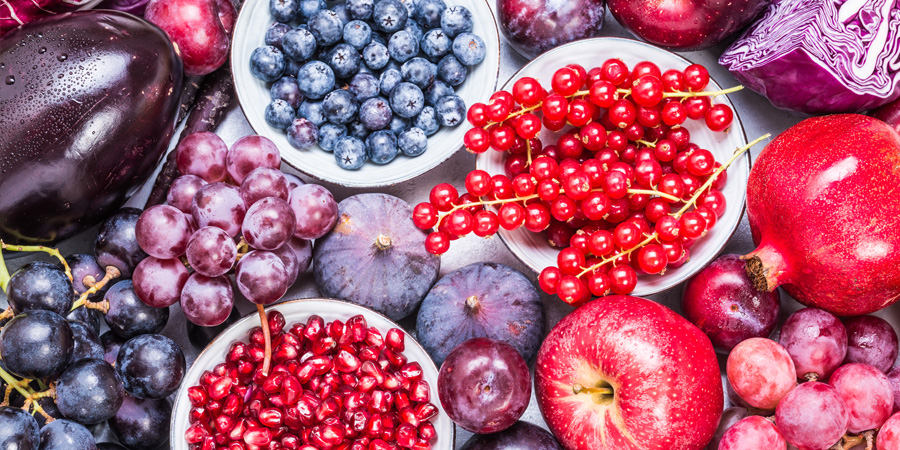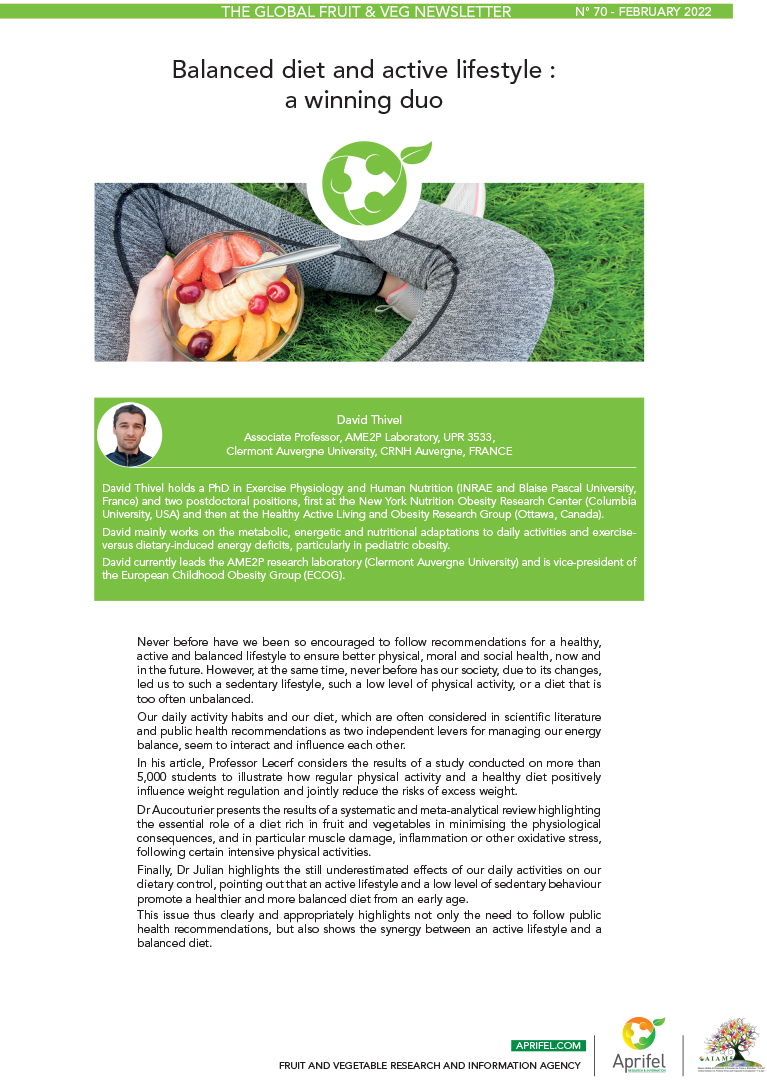Anthocyanins can help improve muscle recovery in athletes

Muscle damage can occur both in highly trained athletes and in occasional athletes when they make unusual efforts in terms of duration or intensity. This muscle damage can cause temporary soreness (up to 48 hours), which includes both a perception of pain and a decrease in joint mobility and the ability of the muscle to contract effectively.
In this article, data from a recent review and meta-analysis on the effects of anthocyanins in fruit on muscle recovery after exercise are summarised.
Muscle damage occurs mainly during unusual exertion
Muscle damage is related to longer than usual or more intense sports activities, in terms of both cardio-respiratory activity and the forces produced. This damage is not serious in terms of health and can even be considered a normal stage in the process of muscle adaptation to exercise (MacIntyre, 1995).
This muscle damage results in the loss of cell membrane integrity, which leads to the passage of intra-cellular proteins into blood circulation, and an alteration in the structure of the muscle cells, thus limiting their ability to contract effectively. While some of this damage is the direct result of mechanical stress on the muscle, some of it is linked to the increase in oxidative stress during exercise, and then to the inflammation that follows it (Pyne, 1994).
This has prompted research into whether the polyphenols, and particularly the anthocyanins (mauve or red pigments), contained in the fruit can have antioxidant and anti-inflammatory effects that limit muscle damage.
Recently, researchers from Northumbria and Newcastle Universities in the UK undertook a systematic review and meta-analysis of these studies (Kimble, 2021).
Anthocyanins improve muscle recovery at biochemical, functional and perceptual levels
Analysis of the data compiled from these studies indicates the following main results:
- Anthocyanin consumption results in significant decreases in markers of muscle damage such as creatine kinase (CK) and markers of inflammation such as C-reactive protein (CRP), while total antioxidant capacity is significantly increased.
- From a functional point of view, the consumption of foods rich in anthocyanins results in less loss of muscle strength after exercise. Moreover, this significant effect, immediately after the end of the exercise, persists for at least 48 hours.
- On a perceptual level, muscle pain related to soreness is significantly reduced 24 hours after exercise.
One of the advantages of the action of anthocyanins is that they act on multiple signalling pathways. This includes, for example, anti-inflammatory effects by inhibiting enzymes such as cyclooxygenase, which is responsible for the protection of prostaglandins, or antioxidant effects which limit damage to muscle cell membranes (Bloedon, 2019). Ultimately, the lesser damage to the integrity of the muscle allows its function to be preserved (Kimble, 2021).
The recommendation would be to consume fruit and vegetables that are rich in anthocyanins for a faster recovery after exercising
A limitation of current studies on anthocyanins in fruit is that they often concern processed products, whether juices, powders or concentrates. It follows that anthocyanin intakes can vary greatly from one study to another, although it is not possible to conclude that there is a clear link between anthocyanin dose and the extent of muscle damage limitation. Thus the median anthocyanin intake of the 39 included studies is 80 mg/d, with extreme values ranging from 8 to 3600 mg/d (examples of anthocyanin contents in certain fruit: blackcurrant: 592 mg/100g; black grape: 35mg/100g; raspberries: 31mg/100g; strawberries: 24mg/100g – www.aprifel.com).
Despite this limitation, the existing data justify recommending the consumption of anthocyanin-rich fruit and vegetables for those who wish to recover more quickly from unusual exercise (McLeay, 2012; Vitale, 2017). These aspects are interesting both for competitive athletes who want to limit the impact of muscle damage on their performance and for more occasional exercisers who want to limit the discomfort of muscle soreness.
Based on: Kimble R, et al. The effect of dietary anthocyanins on biochemical, physiological, and subjective exercise recovery: a systematic review and meta-analysis. Crit Rev Food Sci Nutr. 2021 Aug 17:1-15.
- The anthocyanins in fruit have anti-inflammatory and antioxidant effects that limit damage to muscle cell membranes
- The existing data justify the recommendation to consume fruit and vegetables that are rich in anthocyanins, after muscular effort and to limit the discomfort linked to muscle soreness.

